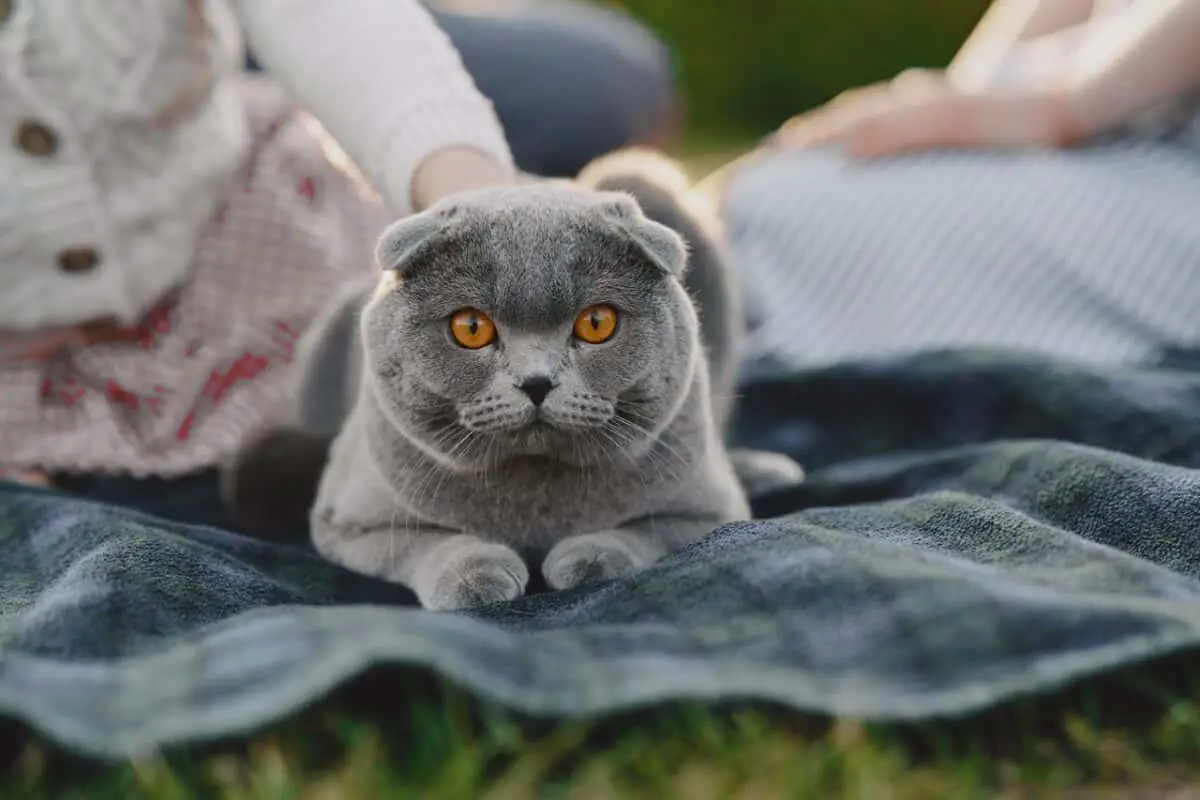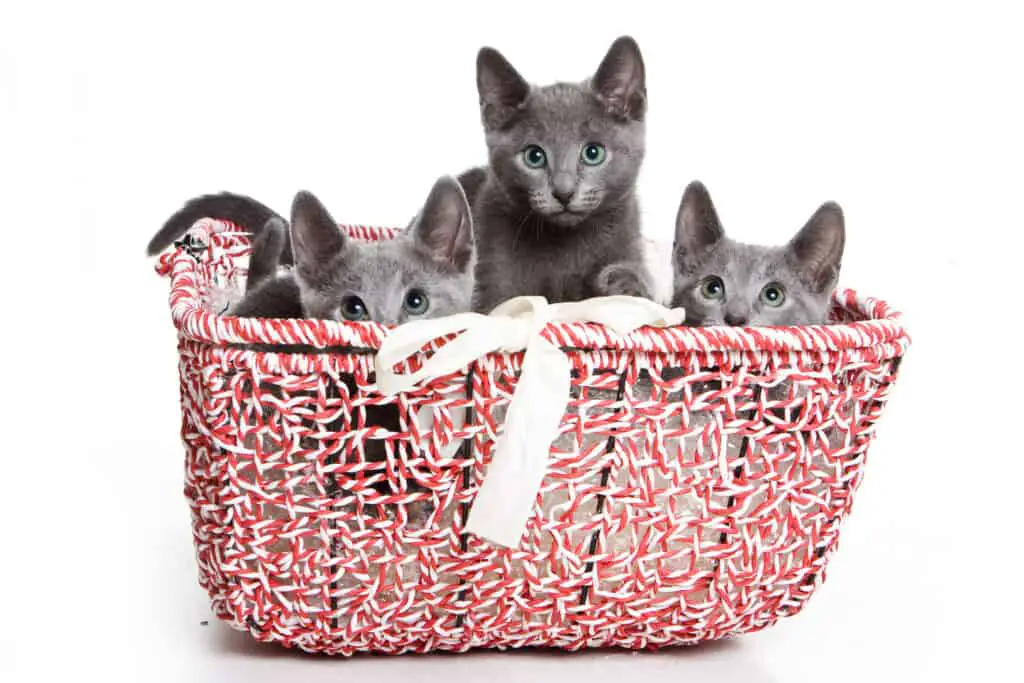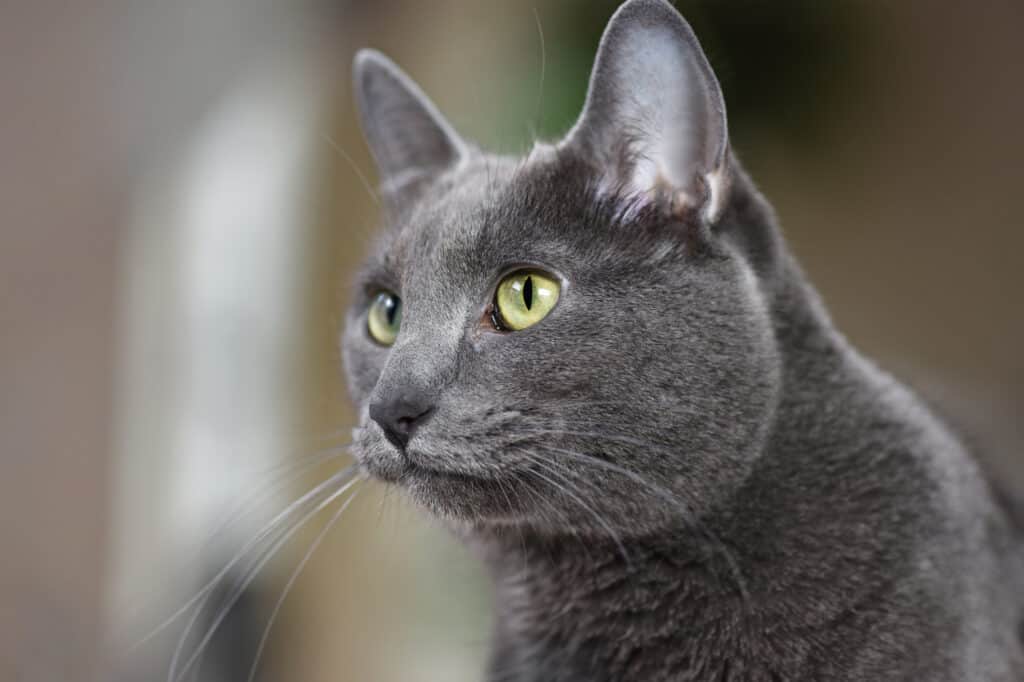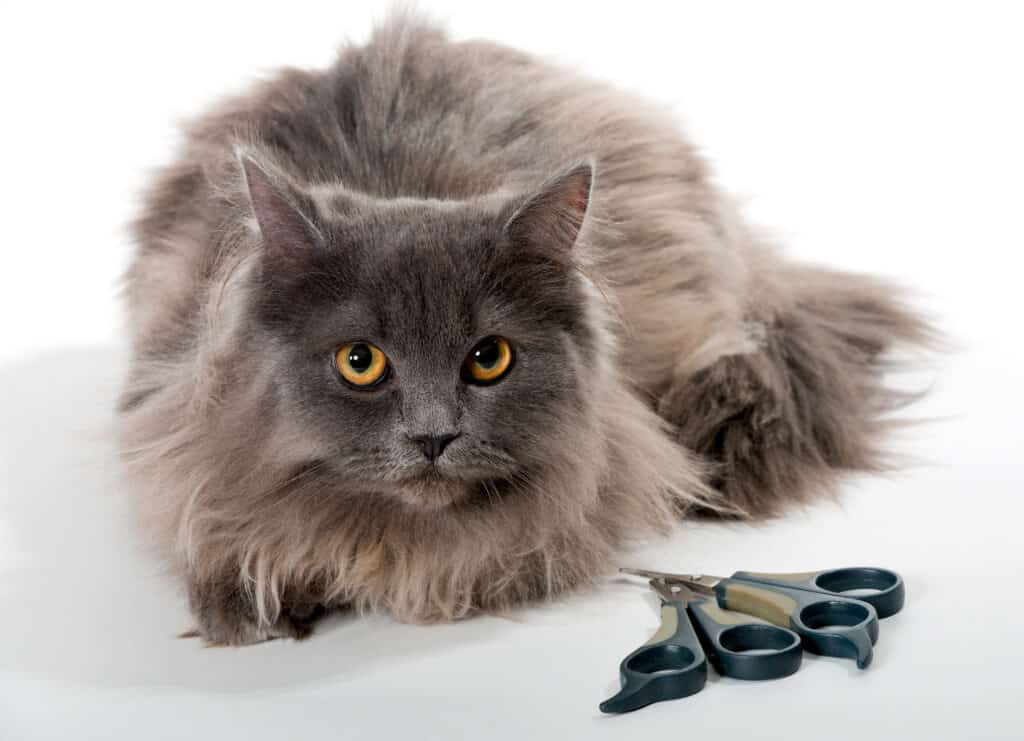At first glance, it’s very easy to get the Chartreux and the Russian Blue cat mixed up because they look so similar. They are both a gorgeous shade of smokey blue-gray and relatively close in proportion.
But these two felines do have some differences. In this article, I will go through all of the wonderful things these breeds have to offer and some of the things to be cautious about.
But first, let’s start with a little history.
History of the Russian Blue
It is believed that the Russian Blue originated from Archangel Island in northern Russia. They were favored by many Russian Czars and referred to as Archangel cats.
These beautiful cats gained popularity after being associated with Russian royalty and were soon imported to Europe. They were among the first breeds to compete in English cat shows in the early 19th century.
History of the Chartreux
The Chartreux dates back to the 15th century in Syria when French Crusaders brought the cat back to France. The Chartreux became popular in France as she was excellent at killing rodents, and many were kept at the monasteries as the first line of defense.
It wasn’t until 1970 that the breed was brought to the United States, where it was soon accepted into the Cat Fancier’s Association.
Appearance
While they are quite similar to look at, there are some subtle differences between them and once you know what to look for, it’s easy to tell them apart.
Let’s have a look at the most distinguished differences between both breeds.
The appearance of the Russian Blue
The Russian Blue has a bright blue color and a more lustrous appearance. She has a smooth and graceful head, a shorter muzzle, and large, impressive ears.
Her eyes are expressive and a lovely emerald color.
The Russian Blue has a graceful, muscular body with long legs, and her tail is long and sleek.
Depending on her diet, the Russian Blue usually weighs between 8 and 15 lbs, with the female being slightly smaller than the male.
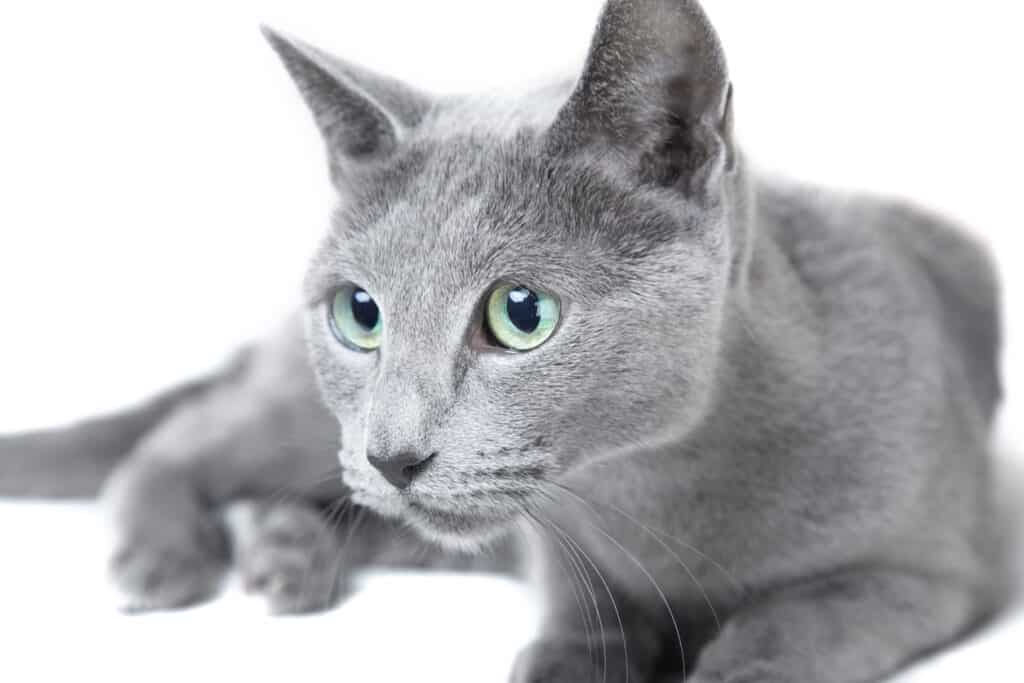
The appearance of the Chartreux
The Chartreux ranges from a blue-gray to slate to ash. She has a blue tone over her coat. Her head is broad, and she has some fluff on her cheeks. Her nose is medium length, and her face has a gentle expression with small ears. Her gorgeous eyes range from gold to copper.
The Chartreux is robust with short legs and rounded paws. Her tail is a moderate length.
She usually weighs between 7 and 14lbs as well and can tend to be on the chunkier side if not monitored.
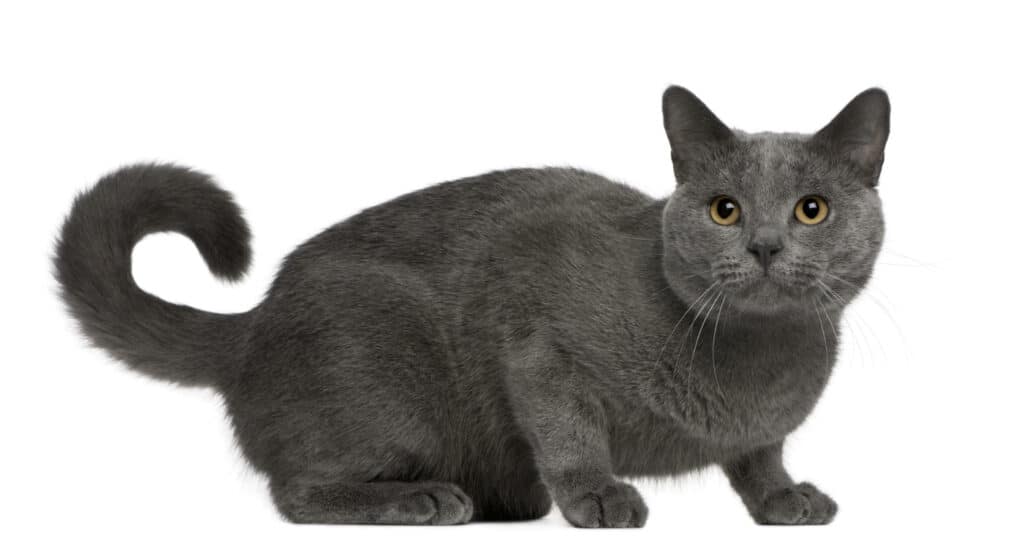
| Russian Blue | Chartreux |
|---|---|
| Brighter blue-gray coat | Slightly darker blue-gray coat |
| Large ears | Smaller ears |
| Muscular lean body with long legs | Robust, rounded body with short legs |
| Long sleek tail | Tail of moderate length |
| Bright green eyes | Yellow or ‘copper’ colored eyes |
| Face is more sleek and pointy | Has a more rounded face |
Temperament
I think all cats are lovely, but they all have their personalities. Although similar in appearance, the Russian Blue and Chartreux exhibit different personalities.
Which character traits you prefer in a cat depends on what you’re looking for in a fluffy companion. Let’s take a look at what sets both breeds apart in terms of personality.
Russian Blue Temperment
The Russian Blue loves her family and is very gentle, but she is also a bit shy around strangers, and it may take her some time to warm up to people.
Blues love to cuddle and spend time with you, but they are certainly not clingy and also value their alone time.
While they’re generally calm and quiet, they do love to play from time to time and can get very dramatic in their play, teasing and seducing you to participate.
She is fine being an indoor cat and would much rather curl up on your lap than get into trouble outdoors. But she is a climber and will get into mischieve to get your attention.
The Russian Blue is not overly talkative, but when she does meow, it is the sweetest and softest little voice.
Suggested reading: Do Russian Blues Meow A Lot?
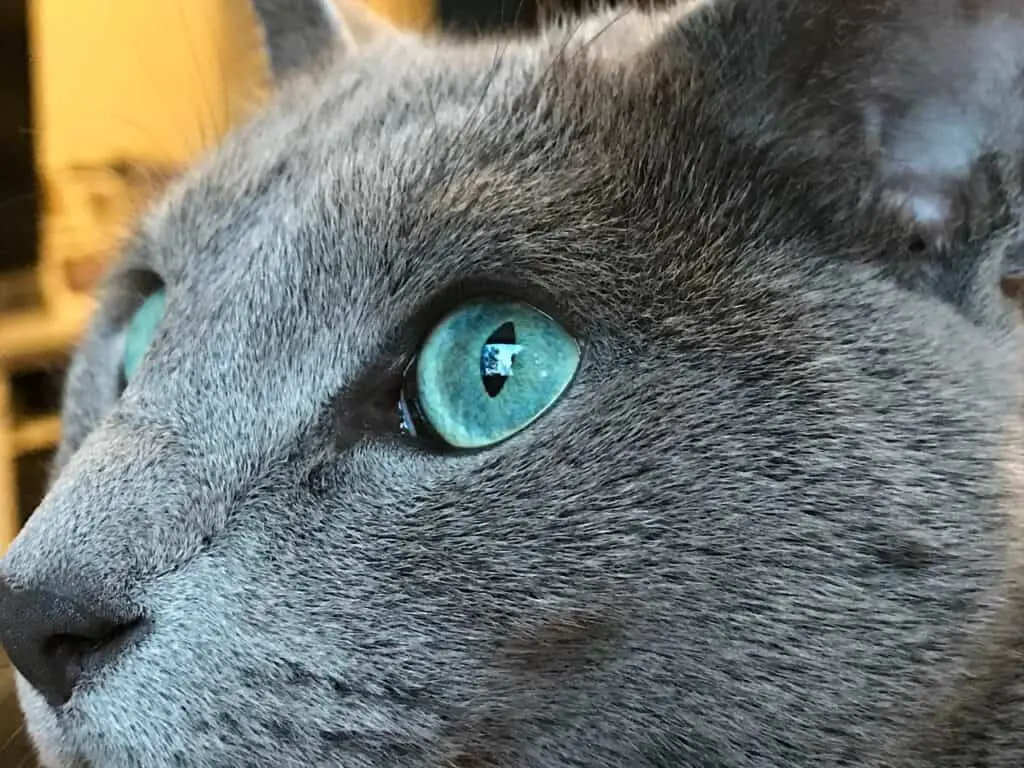
Chartreux Temperament
While she can be playful, the Chartreux really loves curling up in your lap more than anything. She is a snuggle bug and isn’t shy about asking for a cuddle.
The Chartreux is a small and loyal breed that can sometimes be a bit clingy, definitely more than the Russian Blue.
She loves the outdoors, so if you plan on keeping your Chartreux indoors, be prepared to guard windows and doors. She has also been known to sneak her way into small spaces like your cabinets while she is looking for a treat.
Chartreux, like the Russian Blues, are not overly talkative. Usually, they talk to get your attention if they want something, but they’re not into endless cat-conversations like Siamese cats, for example.
| Russian Blue | Chartreux |
|---|---|
| Shy and gentle, not overly social | More social, sometimes clingy |
| Likes to cuddle but values alone time | Lap cat, not afraid to ask for cuddles |
| Easy to keep indoors | Loves the outdoors and wants to explore |
Health
As with any pet, health is critical when deciding what breed to get.
Often certain breeds have specific health issues that they may be more prone to than other breeds, especially when it comes to purebred cats.
However, because the Russian Blue and the Chartreux are both naturally occurring breeds (i.e. not bred by humans), they are both relatively strong and healthy.
Russian Blue Health
With their good genes, the Russian Blue is lucky to have no serious illness or defects in their lineage and will live between 10 to 20 years. There have even been cases of Russian Blue’s living past 20 with a proper diet.
The Russian Blue can be prone to obesity, so it’s important to watch her diet and not feed large portions at a time.
Male Russian Blues are known to develop urinary tract issues when they get older, often caused by salts and minerals in their diet.
Suggested reading: 10 Ways To Make Your Cat Live longer
Chartreux Health
The Chartreux is certainly more prone to disease, such as patellar luxation. Patellar luxation can be more common and is caused when the kneecaps slide out of the joint.
Thankfully, this can usually be treated with surgery.
The Chartreux can also have problems with kidney stones, so encourage plenty of water for your girl to help prevent these.
Another issue with the kidneys that can plague the Chartreux is the polycystic kidney. While treatable, it does pose the threat of kidney failure.
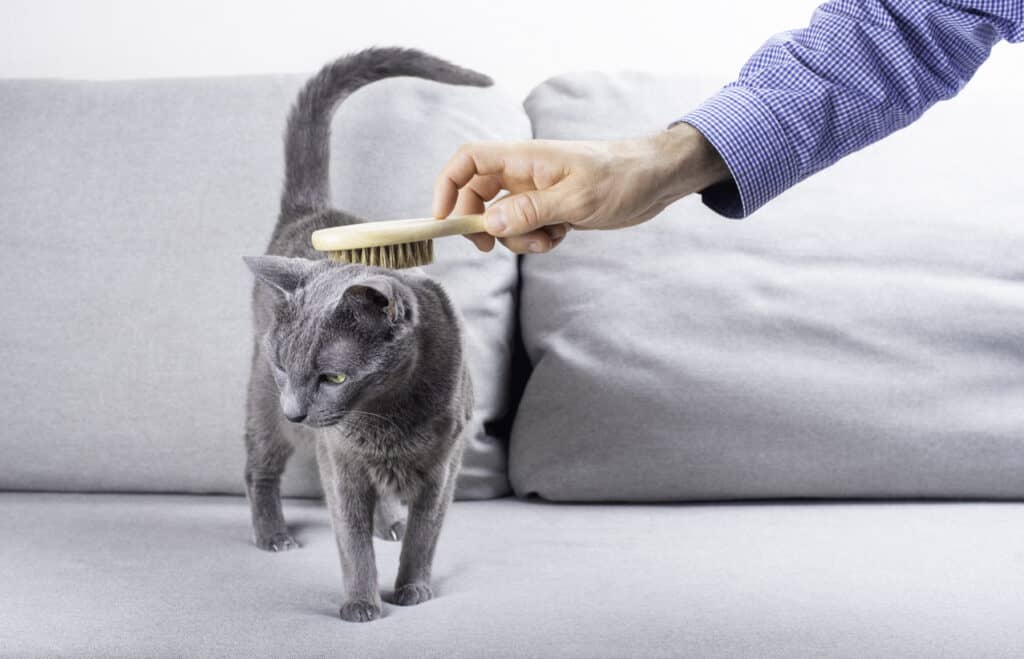
Daily Care
Every animal we take into our homes deserves the best in daily care.
Like their appearance, when it comes to daily care, the Russian Blue and Chartreux are similar. Let’s have a look at their specific needs.
Russian Blue Care
The Russian Blue is fairly easy to care for on a daily basis. Because of their short coat, they don’t need a lot of grooming and bathing. A gentle combing once or twice a week is advised, and if you can, try to brush her teeth once a week.
Russian Blues can be overeaters, so watch her weight and be sure to feed her a good diet.
They are not terribly fond of drinking water, so you must be on top of this. It’s advisable to check with the veterinarian if you think there is a chance she isn’t drinking enough.
Their reluctance to drinking can cause or exacerbate urinary tract issues that this breed is prone to. Feeding your Russian Blue primarily wet food is a good way to ensure they get enough liquids.
Overall, plenty of love and affection from you will certainly add to their general well-being.
Chartreux Care
The Chartreux is also generally easy to care for, especially in the grooming dept. A gentle brushing once a week is ideal, and if you make brushing a pleasurable event, it can actually help you bond.
Like the Russian Blue, the Chartreux needs some coaxing to ensure she gets enough water and a healthy diet. Again, feeding primarily wet food is a good idea to help your Chartreux get enough liquids to avoid kidney problems which they are prone to.
And, of course, the same level of affection goes for the Chartreux to keep her happy.
Suggested reading: Should I Feed My Cat Wet Or Dry Food?
Price Comparison of the Two Breeds
When it comes to effect on your wallet, the Chartreux is sure to cause a bigger hit than the Russian Blue. You can expect to pay around $1000 for one and between $400 to $600 for a Russian Blue.
However, these are ballpark numbers, and there are several factors that influence the price you will pay for either of them.
An interesting fact is that the price, especially a Russian Blue, depends on the continent you live in. Prices in Europe are much higher compared to their prices in the US. This is because Russian Blues in Europe are much rarer than in the US.
Other factors influencing price are age, purity of the breed, whether you get them from a breeder or elsewhere, the breeder’s type (and quality), whether or not they had their vaccinations, and the cat’s general health.
Why advise doing your own thorough research before getting any cat the same goes for Russian Blues or Chartreux.
Try to avoid making price the primary criterion for choosing a cat. Very often, if not always, paying a higher price at a breeder is often a sign that the cat is healthier and better cared for than when getting a cat at a dogy kitten farm.
Our Final Thoughts
All cats are adorable fluffy cuddle balls, and whether, in the end, you decide on a Russian Blue or a Chartreux (or any other breed, for that matter), you will be happy with your choice.
The most important thing is that your new feline family member receives the love and care from you that it craves and needs.
We hope this article was helpful in pointing out some of the major differences between Russian Blues and Chartreux cats and helped you decide on one or the other.
Love reading about cats?
Then you will enjoy our other content. Please have a look at these popular articles on our website.
-
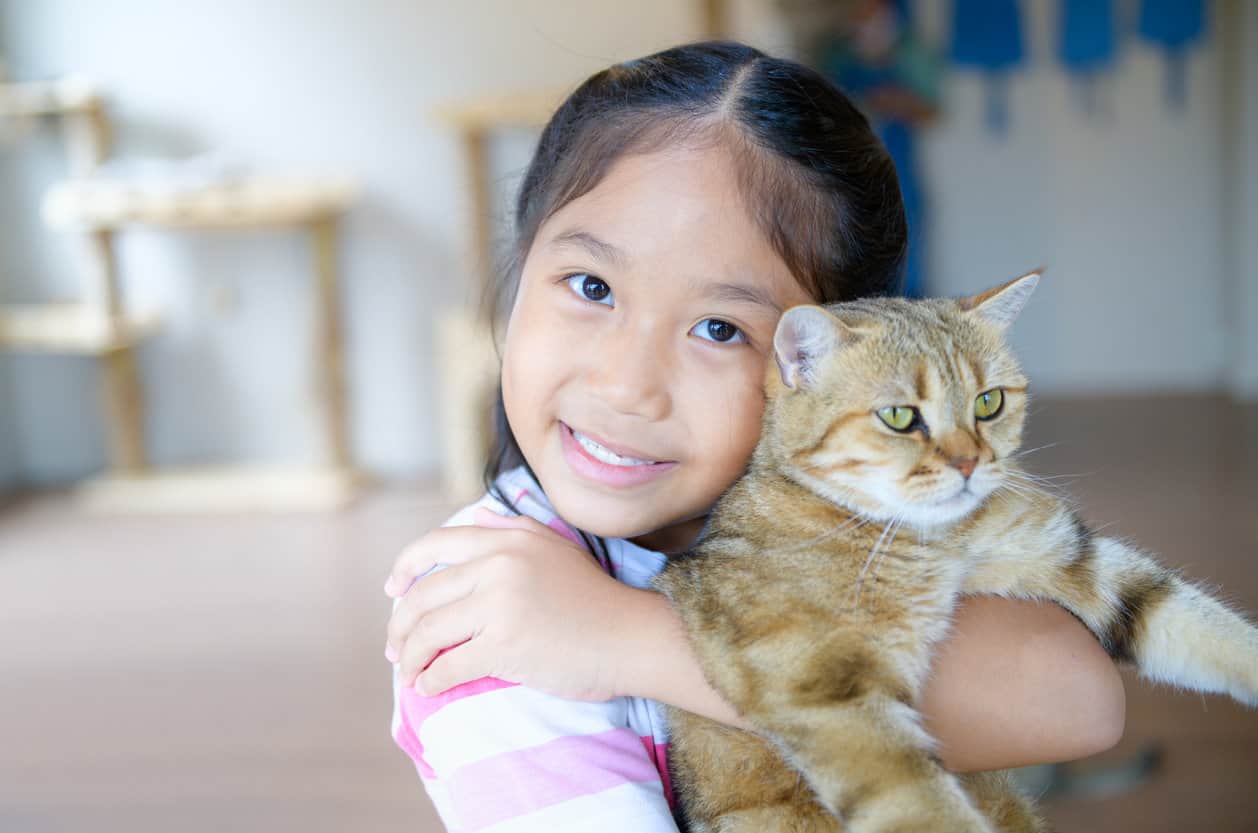
10 Ways to Make Your Cat Live Longer
The oldest cat to ever live passed away at the old age of 38. On average, household cats live between […]
-
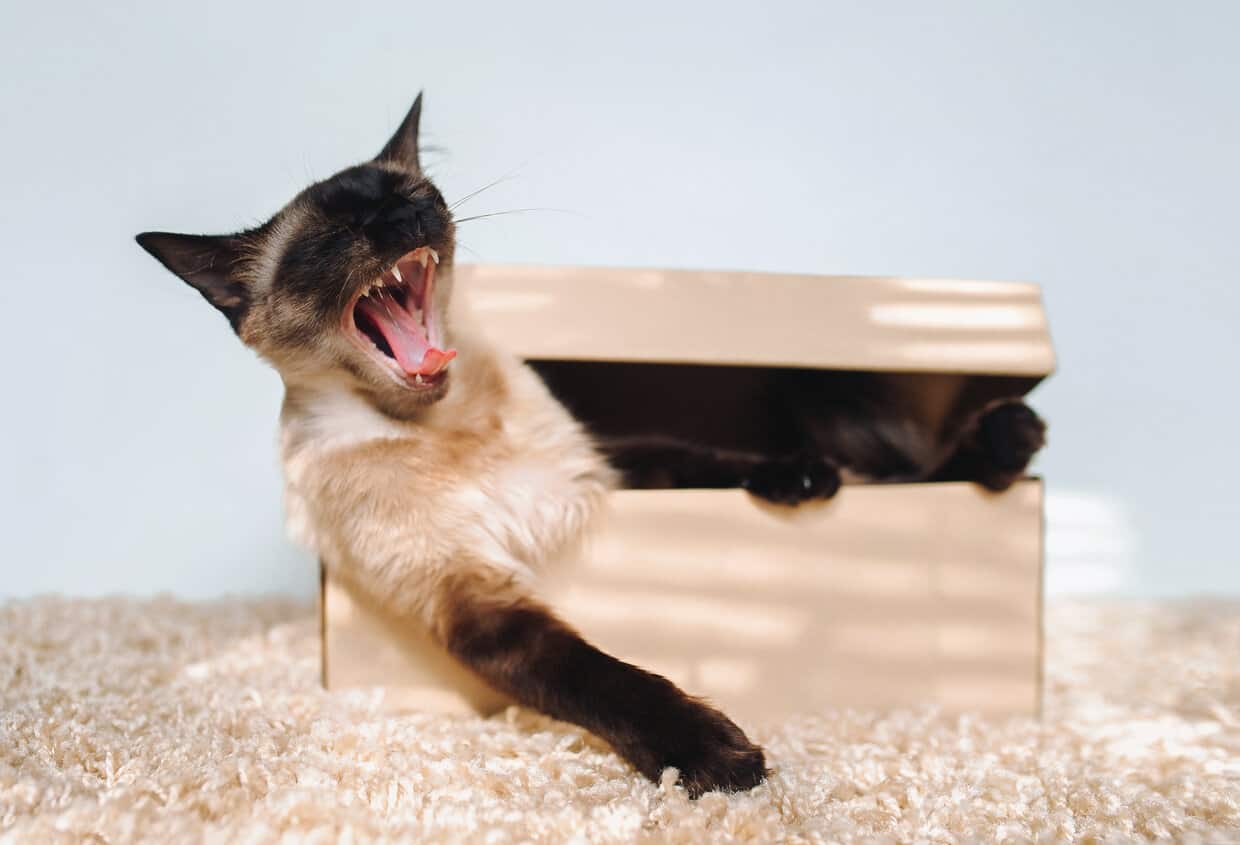
12 Reasons Why Siamese Cats Cry at Night
Siamese cats are a popular breed of cats that many people choose to have as pets. Perhaps you have heard […]
-
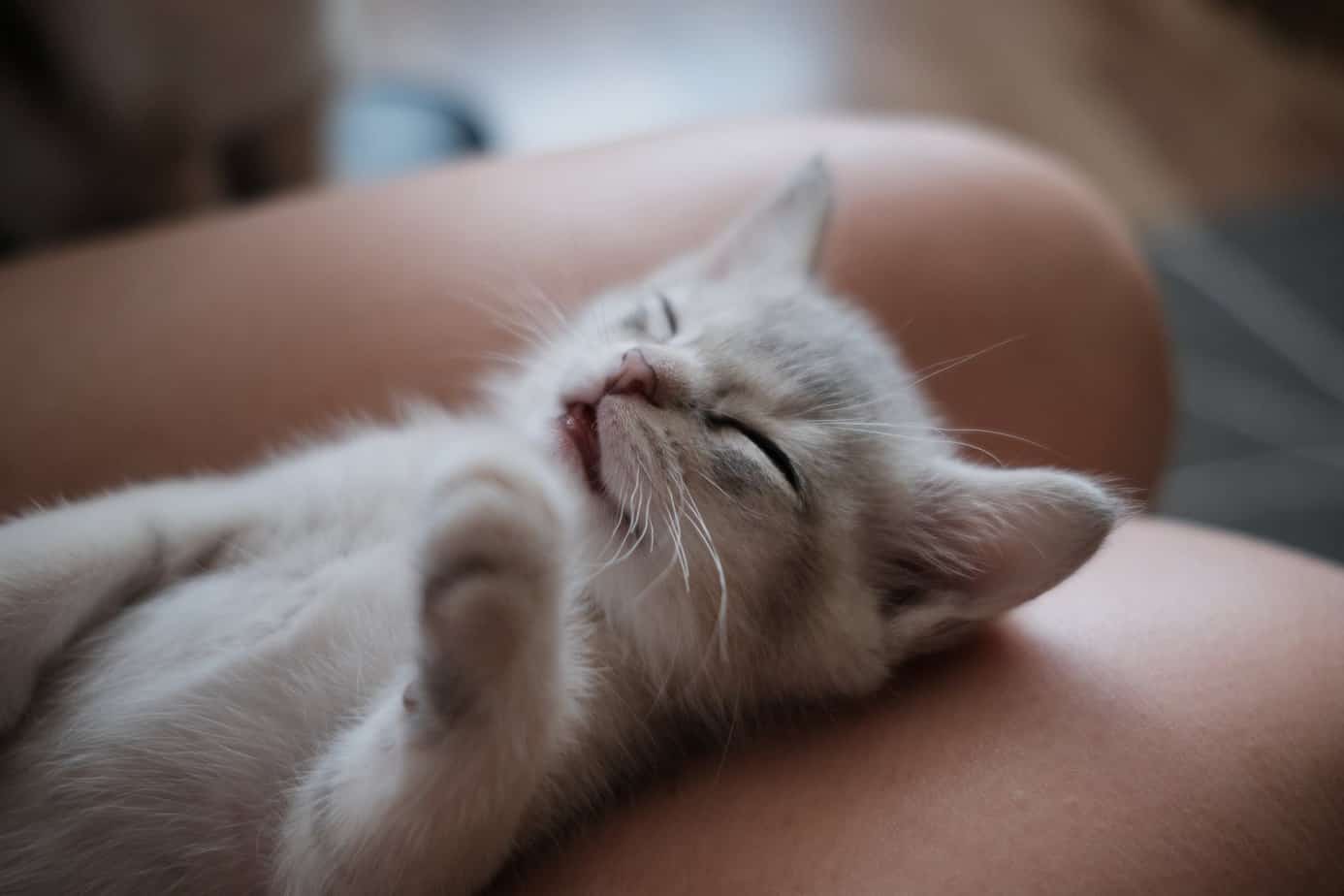
15 Incredible Ways That Cats Show Affection For Humans
Wondering how cats show their affection for humans? We have listed several incredible ways that cats are trying to show their love for us.

